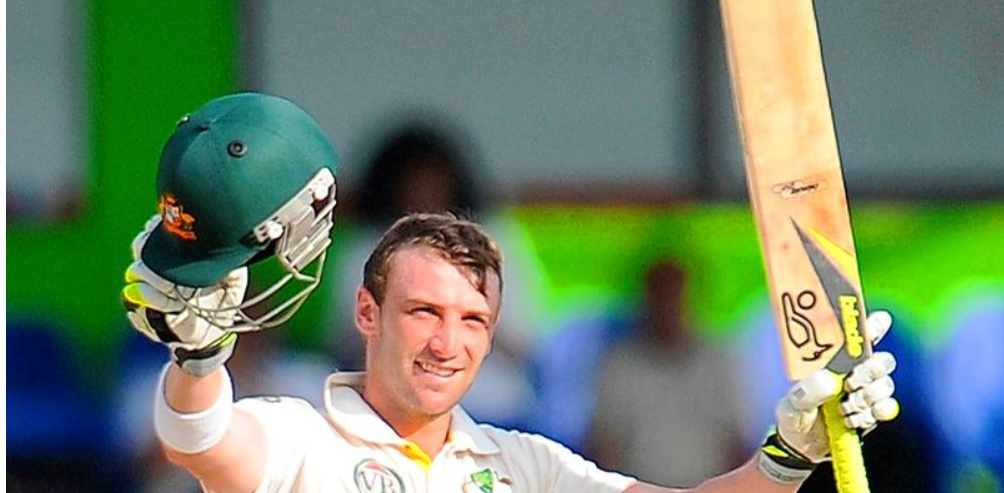1. Introduction: A Tragic Loss That Shaped Cricket Forever
Death November 25, 2014, the world of cricket was shaken to its core with the untimely death of Australian cricketer Phillip Hughes. The tragic incident, which occurred at the Sydney Cricket Ground during a domestic match, not only altered the course of Hughes’ promising career but also left an indelible mark on the entire cricketing community. A talented and beloved cricketer, Hughes’ passing at the young age of 25 was a stark reminder of the fragility of life and how unpredictable fate can be.
As we mark the 10-year anniversary of Hughes’ tragic passing, it is an appropriate moment to reflect on his life, the impact of his death, and the lessons that emerged from this heartbreaking event. While Hughes was taken away too soon, his legacy endures through the memories he created on and off the field. His death also brought about significant changes in the sport of cricket, particularly in terms of player safety, sportsmanship, and the mental resilience needed to cope with life’s uncertainties.
2. The Life and Career of Phillip Hughes
Phillip Joel Hughes was a cricketer full of promise and potential. Born on November 30, 1988, in Macksville, New South Wales, Hughes showed an early aptitude for the sport. He made his debut for New South Wales in 2007, and soon after, he was called up to the Australian national team. At just 20 years old, Hughes became the youngest Australian to score a Test century on debut against South Africa in 2009.
Hughes’ career was marked by his unorthodox but effective batting style, often characterized by his unique hook and pull shots. He quickly became known for his fearless approach to the game, whether facing fast bowlers or playing against spin. His performances in domestic cricket, as well as his breakthrough into the national team, suggested a bright future ahead. He was widely regarded as a player with an abundance of talent, and his future in Australian cricket appeared to be limitless.
However, despite his early success, Hughes’ journey was far from smooth. His inclusion in the national team was often marked by periods of uncertainty, with selectors frequently rotating him in and out of the squad. Nevertheless, Hughes continued to showcase resilience and determination, earning admiration for his tenacity.
By 2014, Hughes had earned a reputation as a reliable and gritty batsman, and many expected that he would be a key part of Australia’s future. Tragically, his life and career were cut short just as he was finding his feet in international cricket once again.  for more information click on this link
for more information click on this link
3. The Day That Changed Everything: November 25, 2014
The events leading to Hughes’ tragic death unfolded on November 25, 2014, during a domestic match between South Australia and New South Wales at the Sydney Cricket Ground. In the 63rd over of the match, Hughes was facing a bouncer from bowler Sean Abbott. As he attempted to hook the ball, it struck the side of his neck, just below the helmet.
The impact caused a fatal blow to Hughes’ vertebral artery, leading to a brain hemorrhage. Despite the immediate medical attention he received on the field, Hughes was unable to survive the injury and was taken to St Vincent’s Hospital, where he passed away two days later.
The news of Hughes’ death sent shockwaves through the cricketing world, leaving fans, players, and the wider sporting community in disbelief. His death was a tragic reminder of how quickly life can change, and how even the most experienced athletes are vulnerable to the unpredictable nature of sport.
4. The Aftermath: A Shock to the Cricketing World
Phillip Hughes’ passing reverberated across the cricketing world like a thunderclap. His death was not just the loss of a cricketer, but the loss of a young man with a bright future ahead of him. Players from all corners of the globe paid their tributes, sharing stories of Hughes’ warmth, kindness, and passion for the game.
Hughes’ untimely death also raised serious concerns about player safety, particularly in terms of head and neck protection. The incident underscored the risks involved in the game, particularly when it comes to facing high-speed deliveries from fast bowlers. Hughes’ tragic accident led to renewed calls for improved protective gear, including the development of more effective neck guards to protect cricketers from similar injuries.
In the days following Hughes’ death, cricket was brought to a standstill. The Australian national team canceled their upcoming Test match against India as a mark of respect, while players around the world observed moments of silence in his memory. The entire cricketing community came together, mourning the loss of a beloved figure.
5. The Impact on Australian Cricket: A Nation in Mourning
The death of Phillip Hughes had a profound effect on Australian cricket. Hughes was not only a talented player but also a beloved teammate. His death left a void in the Australian dressing room, and players struggled to come to terms with the loss of their friend and colleague. The emotional toll on his teammates was evident, with many sharing heartfelt tributes to the late cricketer in the days that followed.
Australian captain Michael Clarke, who was a close friend of Hughes, spoke movingly about the loss. Clarke’s tribute to Hughes during his funeral was one of the most emotional moments in Australian sporting history. The bond between the two cricketers, forged through years of playing together, was apparent in Clarke’s words. The impact of Hughes’ death on the Australian team was clear — it was a tragedy that affected not only their sport but also their personal lives.
6. Safety Reforms in Cricket: A Step Towards Protection
One of the major consequences of Phillip Hughes’ death was the increased focus on player safety in cricket. Although the sport had always been associated with a certain degree of risk, Hughes’ passing prompted a reevaluation of the measures in place to protect players from head and neck injuries.
Following the incident, the International Cricket Council (ICC) and various national cricket boards implemented stricter regulations regarding protective gear. The introduction of neck guards, which became mandatory for players in domestic cricket, was one of the most significant changes to the game. These neck guards, designed to reduce the risk of fatal injuries from bouncers, became a key component of players’ protective gear.
The tragic incident also led to a greater emphasis on the mental health and well-being of players. Cricketers are often expected to show resilience and strength in the face of adversity, but Hughes’ death highlighted the psychological toll that such tragedies can have on players. Since then, the cricketing world has placed greater importance on providing support for players facing mental health challenges, recognizing the importance of ensuring the emotional well-being of athletes.
7. Remembering Phillip Hughes: A Legacy Beyond the Field
While Phillip Hughes’ career was tragically cut short, his legacy lives on in many ways. Hughes was not just remembered for his cricketing skills but for his character, his infectious personality, and his love for the game. His death, although a tragic loss, became a catalyst for positive change within the sport.
Players and fans continue to honor Hughes’ memory through various tributes. One of the most poignant moments occurred during the 2015 Test series between Australia and New Zealand, where Australian players wore black armbands in his honor. The #408 hashtag, referencing his total number of runs in Test cricket, became a symbol of remembrance for Hughes, with fans and players alike using it to pay their respects.
Hughes’ family and friends have also worked tirelessly to ensure his memory endures. They established the Phillip Hughes Foundation, which supports a variety of charitable initiatives, including providing assistance to young cricketers and promoting physical activity for young people. Through these efforts, Hughes’ legacy continues to inspire future generations.
8. The Unpredictability of Life and Sport
Phillip Hughes’ death serves as a sobering reminder of the unpredictability of life and sport. It highlights how, no matter how much talent or potential a person has, fate can sometimes take a tragic turn without warning. Hughes’ passing was a stark contrast to the competitive world of cricket, where athletes push their limits daily, unaware of the risks they may face.
His death also sparked conversations about the need to balance competitiveness with safety and the importance of respecting life’s fragile nature. Cricket, like all sports, is a game of uncertainties, and this tragic event forced players, officials, and fans to reflect on the human side of the sport — the emotional and psychological costs that can often be overlooked in the pursuit of success.  for more information click on this link
for more information click on this link
9. Life After Tragedy: Finding Strength Through Loss
In the aftermath of Hughes’ death, many found solace in the strength displayed by his teammates and the wider cricketing community. While the loss was profound, it brought people together in a shared moment of grief, empathy, and respect for Hughes’ life. The resilience shown by those closest to him — including his family, teammates, and coaches — became a testament to the human spirit’s ability to heal and move forward, even in the face of immense sorrow.
The cricketing world has since come to terms with Hughes’ loss, but his influence continues to be felt. His family, friends, and colleagues have channeled their grief into positive actions that not only honor his memory but also strive to make cricket a safer and more inclusive sport.
10. Conclusion: A Life Remembered, A Legacy Secured
Ten years after his death, the memory of Phillip Hughes still resonates deeply with the cricketing world. His untimely passing was a tragic event, but it also prompted much-needed reforms in the sport, led to greater focus on player safety, and highlighted the importance of mental health and well-being in cricket. ALSO READ:- Kohli’s Perth Odyssey — A Testament to His Longevity and Cricketing Excellence 2024





